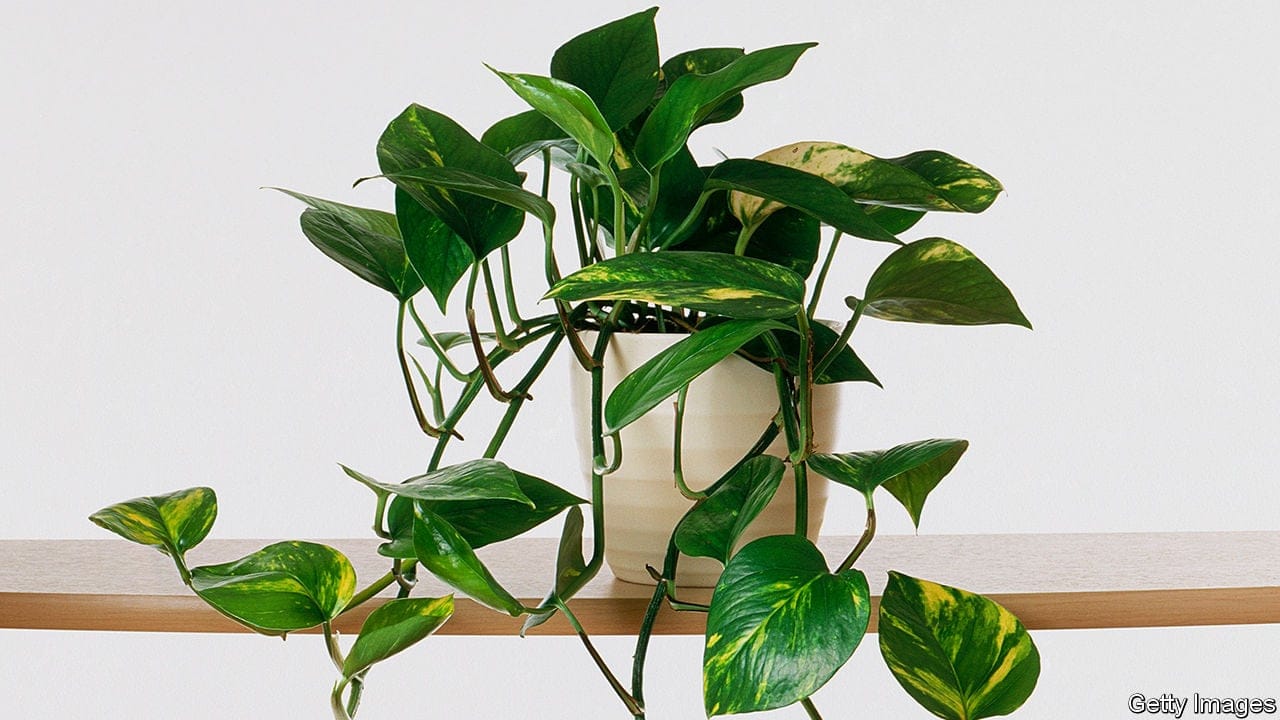- by
- 07 24, 2024
-

-
-
Loading

Loading

THE AIR in modern homes and offices is pretty clean, but not as clean as it might be. Often, it contains small amounts of volatile, toxic, organic compounds such as benzene, formaldehyde, butadiene, carbon tetrachloride, naphthalene and chloroform. Chronic exposure to these is a bad thing, so clearing them out of the air people breathe is widely accepted as worthwhile. Finding an effective way to do so has proved difficult. But Stuart Strand, Long Zhang and Ryan Routsong, of the University of Washington, in Seattle, think they have succeeded. As they report in , their method involves splicing a gene from a rabbit into a popular indoor plant nicknamed Devil’s vine—a type of ivy that is so called because it is famously difficult to kill.The idea of employing plants, both unmodified and transgenic, to de-pollute the atmosphere inside buildings has been around for decades—but has met with only qualified success. One experiment involving unmodified spider plants, for example, showed that they are indeed capable of scrubbing formaldehyde from the air. The drawback is that to make much of a difference in a space as large as a house would require turning most of the rooms into spider-plant forests. Tobacco plants fitted with a bacterial gene for a formaldehyde-destroying enzyme were three times more effective at formaldehyde scrubbing than those without it. The trouble in their case was that tobacco plants flower indoors, and their pollen can thus spread genetically engineered material (about which some people are paranoid) to unexpected places. Dr Strand, Dr Zhang and Mr Routsong thus sought something suitably transgenic, but that does not flower indoors.